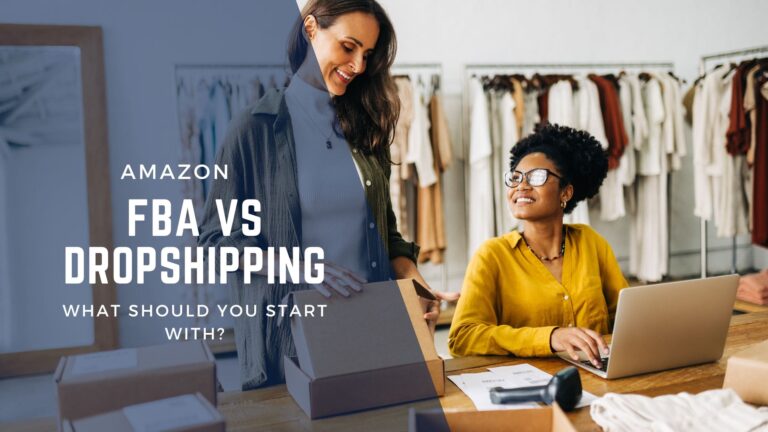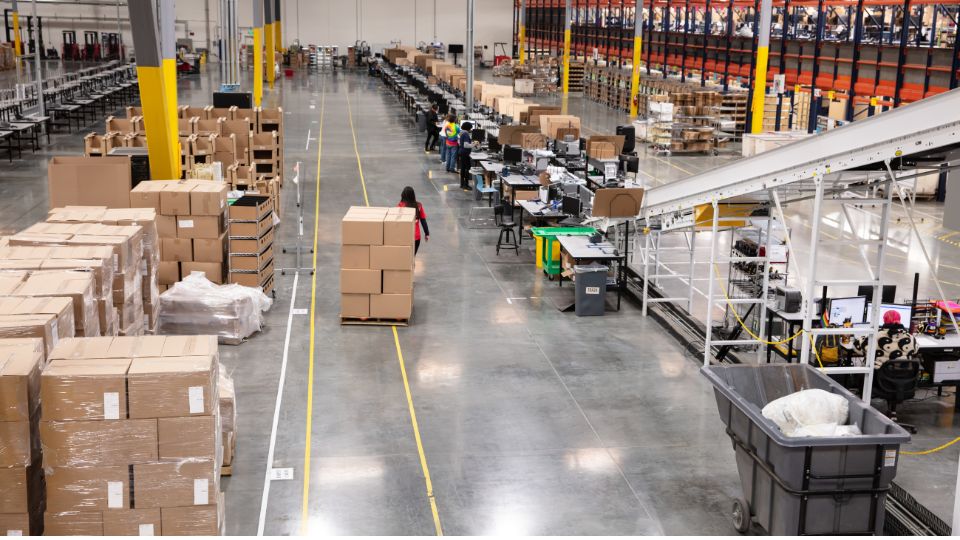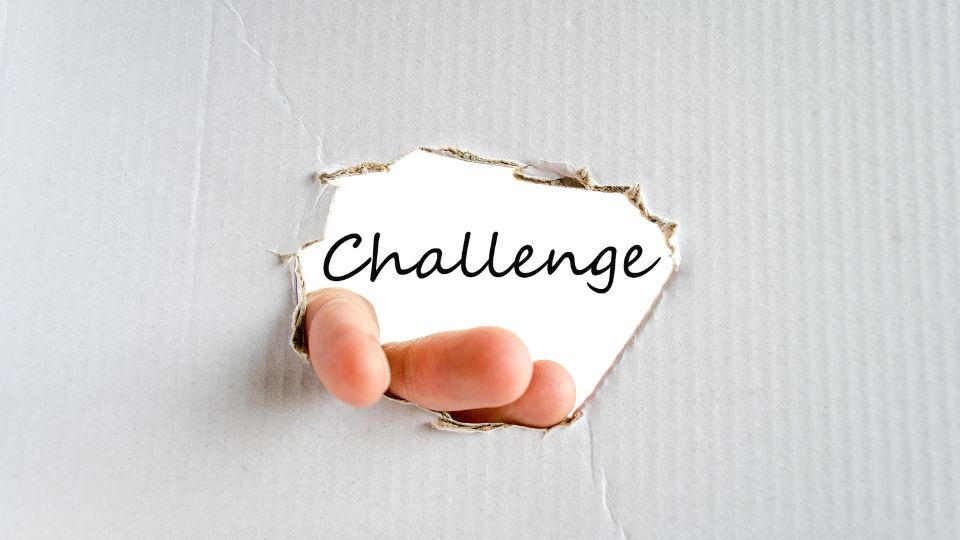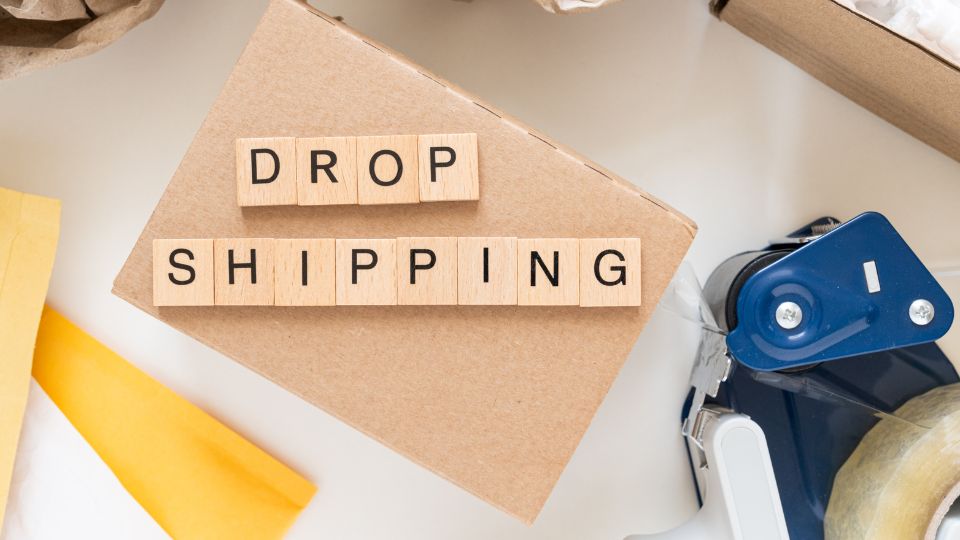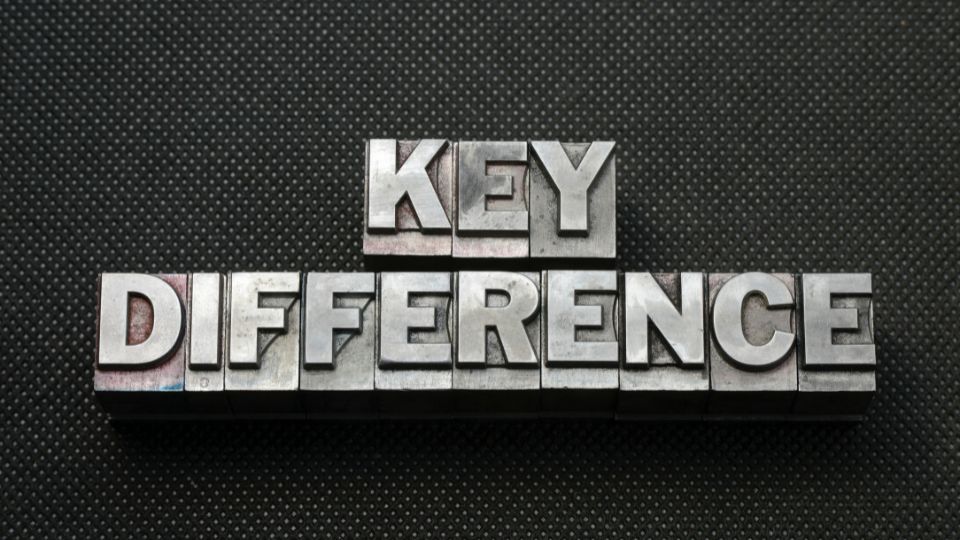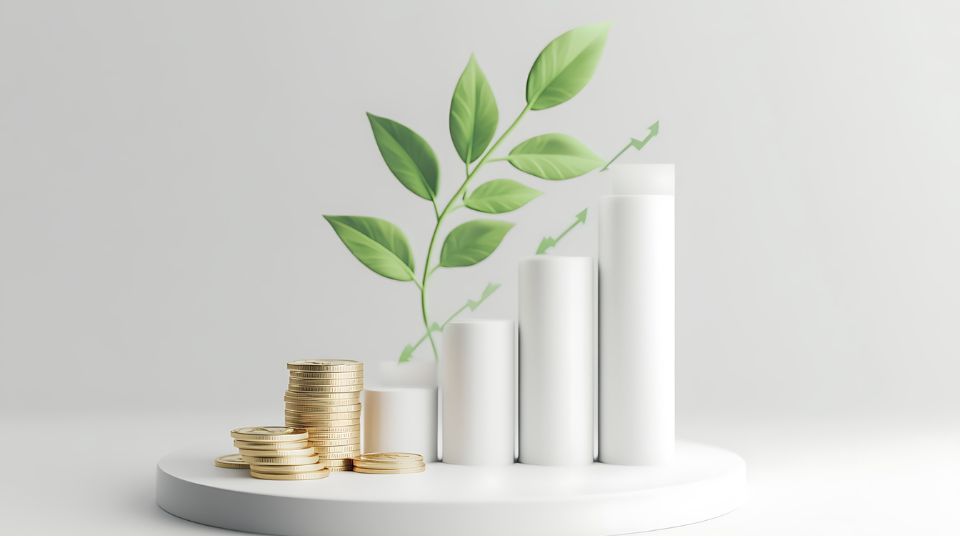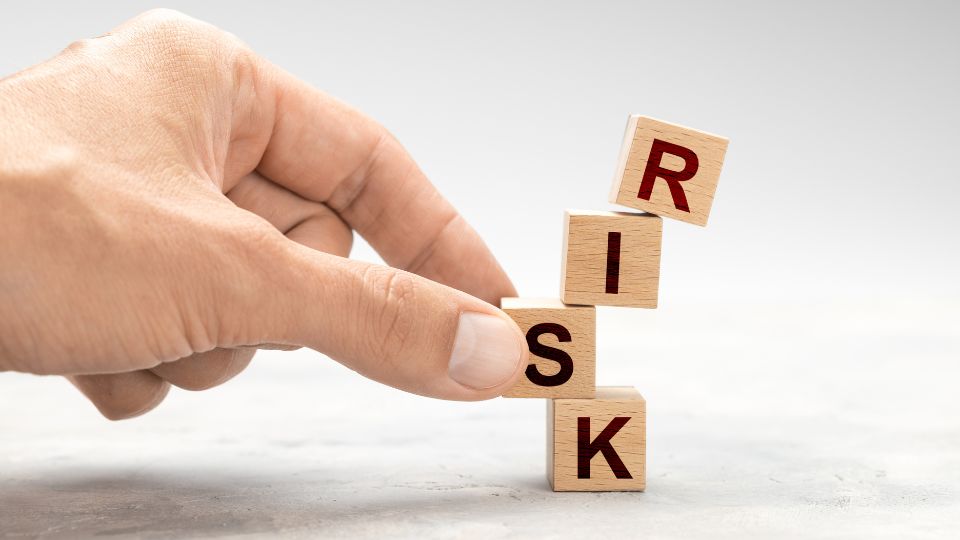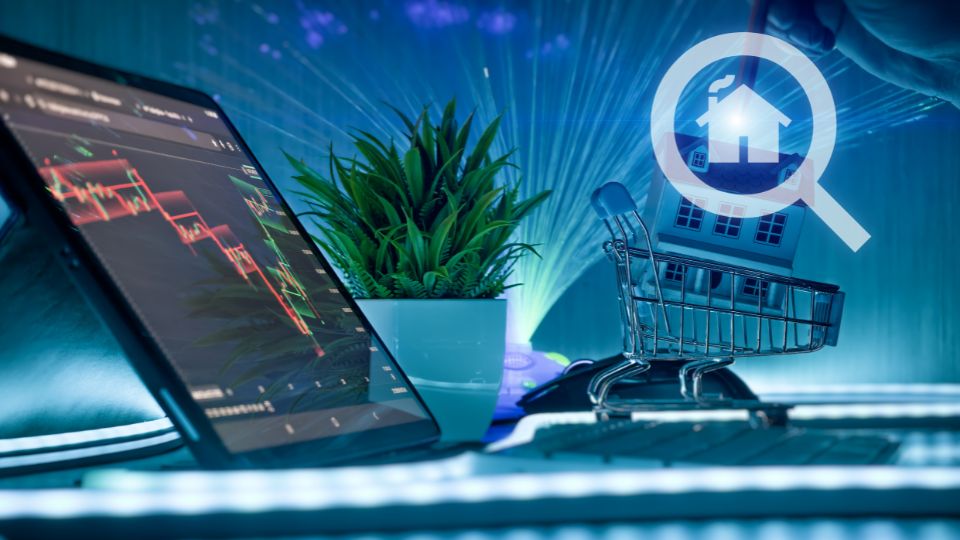Introduction: The Debate Every New Seller Faces
When you type how to make money online into Google in 2025, two business models dominate the search results: Amazon FBA and dropshipping.
On one hand, you have influencers promoting dropshipping as the easiest shortcut to online riches — “no inventory, no risk, instant profits.” On the other, you see Amazon FBA, often framed as the more professional, brand-oriented path that requires planning, investment, and patience.
So which one is actually worth starting with?
The truth is that while both allow you to sell products online, Amazon FBA is the far stronger foundation for anyone who wants to build a lasting, profitable e-commerce business. Dropshipping may look attractive because of its low upfront cost, but in reality, its razor-thin margins, lack of control, and poor scalability make it a shaky model for the future.
In this guide, we’ll break down Amazon FBA vs dropshipping, answer the most common beginner questions, and explain why Amazon FBA is the smarter investment in 2025.
Understanding Amazon FBA
Amazon FBA (Fulfillment by Amazon) is a system where you purchase inventory upfront, send it to Amazon’s warehouses, and let Amazon handle storage, packaging, shipping, customer service, and returns.
The Benefits of Amazon FBA
- Prime eligibility. The Prime badge makes your products instantly more desirable, with access to Amazon’s massive base of loyal Prime members.
- Customer trust. Because Amazon handles fulfillment, buyers feel more secure — leading to higher conversion rates.
- Scalability. FBA allows you to focus on marketing, research, and brand building while Amazon takes care of logistics.
The Challenges of FBA
It’s not without hurdles:
- Fees (storage, fulfillment, referral) will eat into margins.
- Inventory risk since you purchase stock upfront.
- Strict policies that can suspend accounts if you violate rules.
But even with these challenges, FBA sets you up to create a real brand — something dropshipping almost never does. If you want to understand how to build that brand, read this guide to building brand presence.
Understanding Dropshipping
Dropshipping works differently. You don’t purchase stock. Instead, when a customer buys from your store, you forward the order to a supplier who ships it directly to the customer.
Why Dropshipping Seems Attractive
- Low startup cost — you can launch with under Rs. 45,000.
- Minimal upfront risk since you don’t hold inventory.
- Product flexibility — you can test multiple items quickly.
The Problems With Dropshipping
But here’s the downside:
- Slow shipping times (7–30 days), especially from overseas suppliers.
- No product control — you never inspect what’s being shipped.
- Low margins — typically 5–15%, often wiped out by high ad costs.
- No brand loyalty — customers see you as a middleman, not a brand.
That’s why many beginners who start with dropshipping abandon it within months — they realize the hype doesn’t match the actual results.
Amazon FBA vs Dropshipping: Key Differences
Here’s a breakdown of FBA vs dropshipping across critical business factors:
| Aspect | Amazon FBA | Dropshipping |
|---|---|---|
| Startup Cost | Rs. 1,00,000–Rs. 1,50,000 | <Rs. 45,000 – Rs. 50,000 |
| Profit Margins | 20–40% | 5–15% |
| Brand Control | Strong (branding, packaging, reviews) | Weak (supplier controls everything) |
| Shipping Times | 1–2 days (Prime) | 7–30 days |
| Customer Trust | High (Amazon-backed) | Low (unknown supplier) |
| Scalability | Easy (Amazon manages fulfillment) | Hard (dependent on supplier reliability) |
Bottom line: Dropshipping is a quick cash-flow model, but not a long-term business. FBA is about building a valuable, sustainable brand. To maximize this, avoid common Amazon listing mistakes.
Profitability: Which Makes More Money?
Which is more profitable — FBA or dropshipping?
- Dropshipping: Margins average 5–15%, and when you factor in refunds, disputes, and rising ad costs, profits often vanish.
- Amazon FBA: Margins range between 20–40%. While you invest more upfront, long-term potential is far greater.
Even more important, Amazon FBA allows you to build brand equity. With a trademark, reviews, and repeat customers, your business becomes a sellable asset worth 3–5x annual profit. Dropshipping stores, by contrast, have almost no resale value.
Takeaway: If you want lasting profitability, Amazon FBA wins hands down. For more on protecting margins, see how to reduce Amazon return rates.
Which is Easier for Beginners?
Many beginners ask: Should I start with FBA or dropshipping as a beginner?
Dropshipping seems easier — spin up a Shopify site, run some Facebook ads, and see if something sells. But the reality is harsh: ad costs are rising, suppliers are unreliable, and customer complaints quickly kill motivation.
Amazon FBA takes more upfront effort: product research, supplier sourcing, and inventory investment. Yet once live, it’s far easier to manage because Amazon handles the logistics and customer support.
Plus, there’s a proven ecosystem of tools like Helium 10 that help beginners succeed with FBA. A good starting point is learning how to boost your Amazon listing visibility.
If you’re serious about building a business, Amazon FBA is the better starting point.
Risks You Must Consider
Both models come with risks.
Amazon FBA risks include:
- Inventory tied up in warehouses.
- High storage fees if products don’t sell.
- Account suspensions for policy violations.
Dropshipping risks include:
- Refunds and chargebacks from unhappy customers.
- Poor product quality leading to bad reviews.
- Suppliers disappearing or changing terms.
The key difference? FBA risks are predictable and manageable with planning. Dropshipping risks are outside your control. To avoid losses, also learn which products to avoid selling on Amazon.
Investment Requirements: Time & Money
Which requires more investment — FBA or dropshipping?
- Dropshipping requires less upfront cash, but heavy ongoing ad spending. Without paid traffic, your store dies instantly.
- Amazon FBA requires upfront investment — typically Rs. 1,00,000–Rs. 1,50,000 for inventory and launch. But after reviews build up, ad costs fall and organic traffic takes over.
So while dropshipping looks cheaper, most sellers end up spending thousands on ads with little return. With FBA, that money builds a long-term asset.
Real-Life Scenarios: Who Should Choose What?
- Beginners with <45,00 budget. Dropshipping looks tempting, but usually leads to disappointment. Better to save capital for FBA.
- Entrepreneurs aiming to build a brand. Amazon FBA is the clear choice — it gives control over product, packaging, and reviews.
- Side hustlers curious about e-commerce. You might experiment with dropshipping to learn ads, but don’t stay stuck there. Transition into FBA for long-term success.
In 2025 and beyond, if your goal is to build a business that lasts, Amazon FBA is the way forward.
FAQ: Quick Answers
What is the difference between Amazon FBA and dropshipping?
FBA: You purchase inventory and Amazon fulfills orders. Dropshipping: suppliers ship directly without you holding stock.
Which is more profitable — FBA or dropshipping?
Amazon FBA, with margins of 20–40% compared to dropshipping’s 5–15%.
What are the startup costs?
FBA: Rs. 1,00,000–Rs. 1,50,000. Dropshipping: <45,000, but higher ongoing ad spend.
Which is better for beginners?
Amazon FBA is better if you want sustainability. Dropshipping often fails in the long run.
Can you do dropshipping on Amazon with FBA?
No. Amazon prohibits pure dropshipping from third-party suppliers like AliExpress. You must follow Amazon’s policies.
Conclusion & Call to Action
The Amazon FBA vs dropshipping debate is not about which is easier today — it’s about which one helps you build a real business tomorrow.
Dropshipping is often marketed as a shortcut, but the reality is disappointing: thin margins, poor customer experience, and no brand value. By contrast, Amazon FBA requires more upfront effort and capital, but delivers better profits, customer trust, and long-term scalability.
If you’re serious about e-commerce in 2025, choose Amazon FBA. Don’t chase short-term sales — build a brand, an asset, and a business that grows in value.
If you want to start and grow your e-commerce brand on Amazon, find the step by step guidance on 3‑Day Amazon Business Training.

